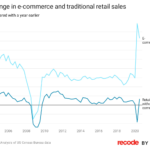Gordon Pape’s mailbag: Investing in EVs, BEP’s share split, the SuperDividend REIT ETF, and more
/cloudfront-us-east-1.images.arcpublishing.com/tgam/3LVV3NE7L5I37E43ZAS37TYR5Y.JPG)
It’s been over a month since I checked the Q&A inbox. Here are some of the most interesting questions I’ve received.
Going electric
Q – It seems that the EV (electric vehicle) and driverless car industry will grow considerably in the coming years. My investment institution does not have a mutual fund or ETF that focuses on this sector. What might be a fairly aggressive way to invest in this sector? – Bruce M.
A – I suggest you look at the Evolve Automobile Innovation Index Fund (CARS-T). It seems to fit your goals perfectly.
This ETF seeks to replicate the performance of the Solactive Future Cars Index Canadian Dollar Hedged index. It invests primarily in companies that are directly or indirectly involved in developing electric drivetrains, autonomous driving, or network connected services for automobiles.
Major holdings include many names that only people familiar with the industry would know. There are 34 stocks in the portfolio. They include FuelCell Energy (9.8 per cent of assets), NIO Inc. (4.4 per cent), Plug Power Inc. (4 per cent), Ceres Power Holdings 3.8 per cent), and ITM Power (3.6 per cent). If you are looking for companies like Apple and Tesla, they’re not here.
About 47 per cent of the fund is in U.S. companies, with 9 per cent in China, 8.5 per cent in Japan, and the rest scattered world-wide.
The fund was launched in 2017 and performance so far has been exceptional. As of Dec. 25, the year-to-date gain was 93.6 per cent. The three-year average annual compound rate of return was 32.8 per cent.
You also get a small amount of cash flow with this ETF. The monthly payout is $0.011 or $0.132 a year. That works out to a yield of 0.03 per cent, so clearly this is not a good choice if you need income. This is a capital gains play.
The management fee is very reasonable at 0.4 per cent plus taxes. There are also U.S. dollar units available, which have generated a slightly higher return (CARS.U). – G.P.
BEP split
Q – Back in the summer I purchased shares of Brookfield Renewable Partners and between then and now they soared upward 50 per cent. But this morning, instantly, they have fallen the same amount. I’d love to understand what happened! – James R., Victoria
A – BEP announced some time ago that is would implement a 3-2 stock split on Dec. 11. Its corporate equivalent, Brookfield Renewable Corporation (BEPC), went the same route. This means investors received a half unit of BEP.UN for each one previously owned. So, if you owned 100 units before, you now have 150. The same applies to BEPC shares. The share/unit prices were adjusted accordingly, as was the dividend. – G.P.
Dividend payments
Q – For tax purposes, is it better for me, as a Canadian, to receive dividends in Canadian dollars or U.S. dollars? Or is it tax neutral? – Frank S.
A – The currency in which you receive the dividends isn’t the issue. Rather, it is the nationality of the company making the payments. For example, Toronto-based Brookfield Asset Management declares its quarterly dividend of $0.12 a share in U.S. currency but, as it is a Canadian company, the payment is eligible for the dividend tax credit.
The tax credit is a significant advantage. For example, an Ontario resident with $75,000 in taxable income has a marginal tax rate of 29.65 per cent in 2020. But the tax rate on dividends eligible for the credit will be only 7.56 per cent, according to accounting firm EY.
Dividends from U.S. companies get no tax break. They are taxed at your marginal rate, just like interest income. Moreover, there is a 15 per cent withholding tax on dividends from U.S. companies, unless the payments are made to an RRSP or RRIF. – G.P.
What about SRET?
Q – In Sept. 2019, I purchased 500 shares of Global X SuperDividend REIT ETF (NDQ: SRET) for my RRSP. The holding is only a small percentage of the total portfolio, and I am happy to continue holding it indefinitely for income purposes, unless you would advise otherwise. I expect that by a year from now, the share price will have bounced back to near my original cost per unit. Would your current advice be to continue to hold, add to my position, or sell it and use the proceeds to acquire a position in a different security? – Don C.
A – The entire REIT sector was hammered by the pandemic. This global ETF dropped as low as US$4.41 in March. It now trades at about double that amount but is still a long way below my original recommended price and is down 42 per cent year to date.
The distribution has been cut four times since the start of the year and is currently at US$0.055 per month (US$0.66 a year). That works out to a yield of 7.4 per cent, using the price at the time of writing, which was $8.90. That yield is on the high side, suggesting the market is still ascribing a significant risk level to this security.
At this point, I would hold and collect the high yield. However, I would not add more units. If you’re going to invest more money in REITs, I would zero in on individual securities that have shown they can survive and thrive in these difficult times. – G.P.
Hedged or unhedged?
Q – I am going to contribute $6,000 to my TFSA at the start of 2021. I was planning to invest this in ETFs that have U.S. stocks but are traded on the TSX in Canadian dollars. Some of these funds have a hedged and unhedged version. If the forecasts are correct for a weaker U.S. dollar for next year, would I be better to buy the unhedged versions in these ETFs? Thanks very much. – Rob M.
A – When a fund is “hedged”, it means the managers have made arrangements to protect the assets against the effect of currency fluctuations. This removes one element of risk. An unhedged fund is fully exposed to currency fluctuations. In terms of Canadian-U.S. dollars, that means that a Canadian investor in an unhedged ETF that invests in U.S. securities would benefit from a rise in the value of the greenback. However, if the loonie goes up against the U.S. dollar, a Canadian investor will suffer a currency loss.
Predicting currency movements, especially short-term, is extremely difficult. That’s why I prefer hedged funds in this situation. Investing carries risk at any time, so why not remove one element of that risk? – G.P.
Do you have a money question you’d like to ask Gordon? Send it along to gpape@rogers.com and write Globe Question on the subject line. Sorry, I can’t guarantee a personal answers but I’ll respond to the most interesting questions in this space periodically.
Gordon Pape is Editor and Publisher of the Internet Wealth Builder and Income Investor newsletters.
Be smart with your money. Get the latest investing insights delivered right to your inbox three times a week, with the Globe Investor newsletter. Sign up today.
Published at Tue, 29 Dec 2020 16:47:34 +0000






Comments
Loading…